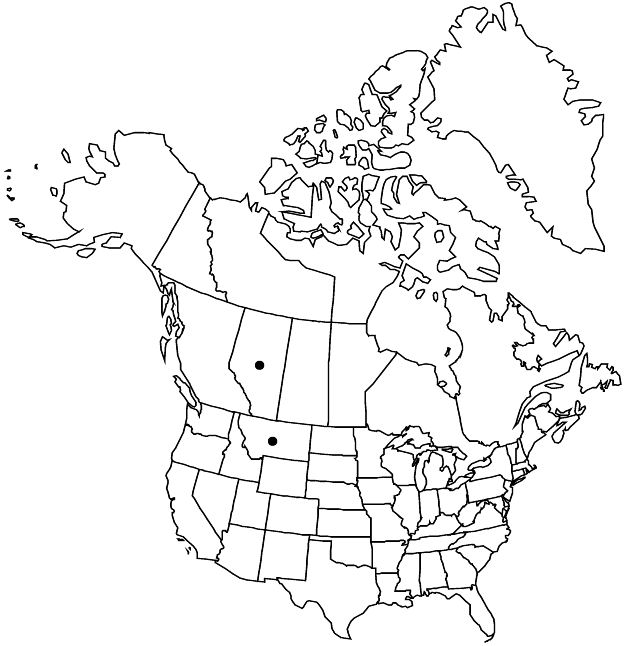Difference between revisions of "Potentilla macounii"
Monogr. N. Amer. Potentilleae, 101, plate 41, figs. 1, 2. 1898.
FNA>Volume Importer |
FNA>Volume Importer |
Revision as of 20:36, 24 September 2019
Stems 0.4–1.5(–2) dm, lengths 2 times basal leaves. Basal leaves subpinnate to pinnate, usually at least 2 pairs of leaflets separate from terminal leaflets, distal leaflets often confluent, 2–7 cm; petiole 1–4(–8) cm, straight hairs abundant, ± appressed to ascending, 1–2 mm, stiff to weak, cottony hairs sometimes present, glands absent or obscured; leaflets 5–9(–11), on distal 1/5–1/2 of leaf axis, strongly overlapping, proximal pair separate from others by 1–5 mm of leaf axis, central leaflets oblanceolate to obovate, sometimes lobed, (0.5–)1–1.5 × 0.5–1 cm, petiolules 0–1 mm, distal 2/3 of margins incised 1/2+ to midvein, teeth 2–5 per side, touching, 1–3 mm, surfaces ± dissimilar, abaxial white, straight hairs ± abundant, ± appressed, 1–1.5 mm, weak to stiff, cottony hairs ± dense, glands absent or obscured, adaxial greenish gray, straight hairs sparse to abundant, usually appressed, sometimes ascending, 1 mm, usually ± stiff, sometimes soft, cottony hairs sparse, glands obscured. Inflorescences (1–)3–6(–10)-flowered. Pedicels 0.8–2 cm. Flowers: epicalyx bractlets lanceolate to ovate-elliptic, 2.5–4 × 0.8–1.5 mm; hypanthium 3–4 mm diam.; sepals (3–)3.5–5.5(–6) mm, apex ± acute; petals 6–7 × 5–7 mm; filaments 1.5–3 mm, anthers 0.8–1 mm; carpels 15–20, styles 2–2.5 mm. Achenes 1.5–2 mm, smooth.
Phenology: Flowering early summer.
Habitat: Rocky slopes, outcrops, gravel banks, prairies
Elevation: 1200–2200 m
Discussion
Of conservation concern.
Potentilla macounii differs from other species in sect. Concinnae in the combination of subpinnate leaves, with at least two proximal pairs of leaflets separated from the terminal leaflets, and in having somewhat softer hairs. It occurs on the eastern slopes of the Rocky Mountains in southwestern Alberta (where of conservation concern) and in western Montana. Some problematic collections from the Absaroka Range in western Wyoming are most comparable to P. macounii, but have softer vestiture and somewhat larger, less divided, more subpalmate leaves. If these Wyoming populations were included in P. macounii, the upper elevation range would be 3300 m.
Selected References
None.
